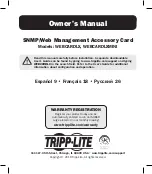
447
Cisco Systems, Inc.
www.cisco.com
Configuring Port-Based Traffic Control
Restrictions for Port-Based Traffic Control
To use this feature, the switch must be running the LAN Base image.
Information About Port-Based Traffic Control
Storm Control
Storm control prevents traffic on a LAN from being disrupted by a broadcast, multicast, or unicast storm on one of the
physical interfaces. A LAN storm occurs when packets flood the LAN, creating excessive traffic and degrading network
performance. Errors in the protocol-stack implementation, mistakes in network configurations, or users issuing a
denial-of-service attack can cause a storm.
Storm control (or traffic suppression) monitors packets passing from an interface to the switching bus and determines if
the packet is unicast, multicast, or broadcast. The switch counts the number of packets of a specified type received
within the 1-second time interval and compares the measurement with a predefined suppression-level threshold.
Storm control uses one of these methods to measure traffic activity:
Bandwidth as a percentage of the total available bandwidth of the port that can be used by the broadcast, multicast,
or unicast traffic
Traffic rate in packets per second at which broadcast, multicast, or unicast packets are received.
Traffic rate in bits per second at which broadcast, multicast, or unicast packets are received.
Traffic rate in packets per second and for small frames. This feature is enabled globally. The threshold for small
frames is configured for each interface.
With each method, the port blocks traffic when the rising threshold is reached. The port remains blocked until the traffic
rate drops below the falling threshold (if one is specified) and then resumes normal forwarding. If the falling suppression
level is not specified, the switch blocks all traffic until the traffic rate drops below the rising suppression level. In general,
the higher the level, the less effective the protection against broadcast storms.
Note:
When the storm control threshold for multicast traffic is reached, all multicast traffic except control traffic, such as
bridge protocol data unit (BDPU) and Cisco Discovery Protocol (CDP) frames, are blocked. However, the switch does not
differentiate between routing updates, such as OSPF, and regular multicast data traffic, so both types of traffic are
blocked.
The graph in
shows broadcast traffic patterns on an interface over a given period of time. The
example can also be applied to multicast and unicast traffic. In this example, the broadcast traffic being forwarded
exceeded the configured threshold between time intervals T1 and T2 and between T4 and T5. When the amount of
specified traffic exceeds the threshold, all traffic of that kind is dropped for the next time period. Therefore, broadcast
traffic is blocked during the intervals following T2 and T5. At the next time interval (for example, T3), if broadcast traffic
does not exceed the threshold, it is again forwarded.
Содержание IE 4000
Страница 12: ...8 Configuration Overview Default Settings After Initial Switch Configuration ...
Страница 52: ...48 Configuring Interfaces Monitoring and Maintaining the Interfaces ...
Страница 108: ...104 Configuring Switch Clusters Additional References ...
Страница 128: ...124 Performing Switch Administration Additional References ...
Страница 130: ...126 Configuring PTP ...
Страница 140: ...136 Configuring CIP Additional References ...
Страница 146: ...142 Configuring SDM Templates Configuration Examples for Configuring SDM Templates ...
Страница 192: ...188 Configuring Switch Based Authentication Additional References ...
Страница 244: ...240 Configuring IEEE 802 1x Port Based Authentication Additional References ...
Страница 274: ...270 Configuring SGT Exchange Protocol over TCP SXP and Layer 3 Transport Configuring Cisco TrustSec Caching ...
Страница 298: ...294 Configuring VLANs Additional References ...
Страница 336: ...332 Configuring STP Additional References ...
Страница 408: ...404 Configuring DHCP Additional References ...
Страница 450: ...446 Configuring IGMP Snooping and MVR Additional References ...
Страница 490: ...486 Configuring SPAN and RSPAN Additional References ...
Страница 502: ...498 Configuring Layer 2 NAT ...
Страница 559: ...555 Configuring Network Security with ACLs How to Configure Network Security with ACLs Creating a Numbered Extended ACL ...
Страница 770: ...766 Configuring IPv6 MLD Snooping Related Documents ...
Страница 930: ...926 Configuring IP Unicast Routing Related Documents ...
Страница 956: ...952 Configuring IPv6 Unicast Routing Configuring IPv6 network 2010 AB8 2 48 network 2010 AB8 3 48 exit address family ...
Страница 976: ...972 Configuring Cisco IOS IP SLAs Operations Additional References ...
Страница 978: ...974 Dying Gasp ...
Страница 990: ...986 Configuring Enhanced Object Tracking Monitoring Enhanced Object Tracking ...
Страница 994: ...990 Configuring MODBUS TCP Displaying MODBUS TCP Information ...
Страница 996: ...992 Ethernet CFM ...
Страница 1030: ...1026 Working with the Cisco IOS File System Configuration Files and Software Images Working with Software Images ...
Страница 1066: ...1062 Using an SD Card SD Card Alarms ...
















































